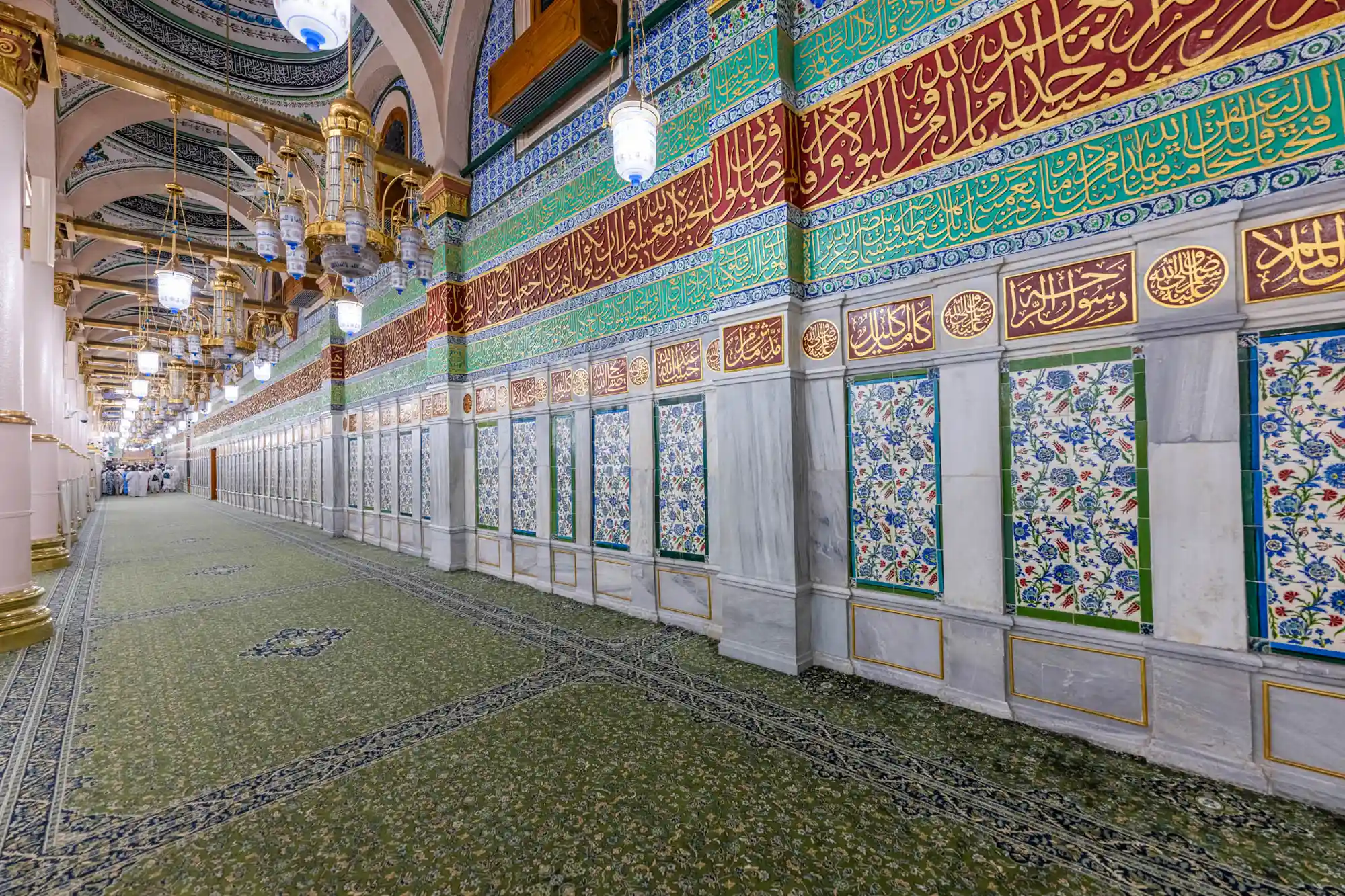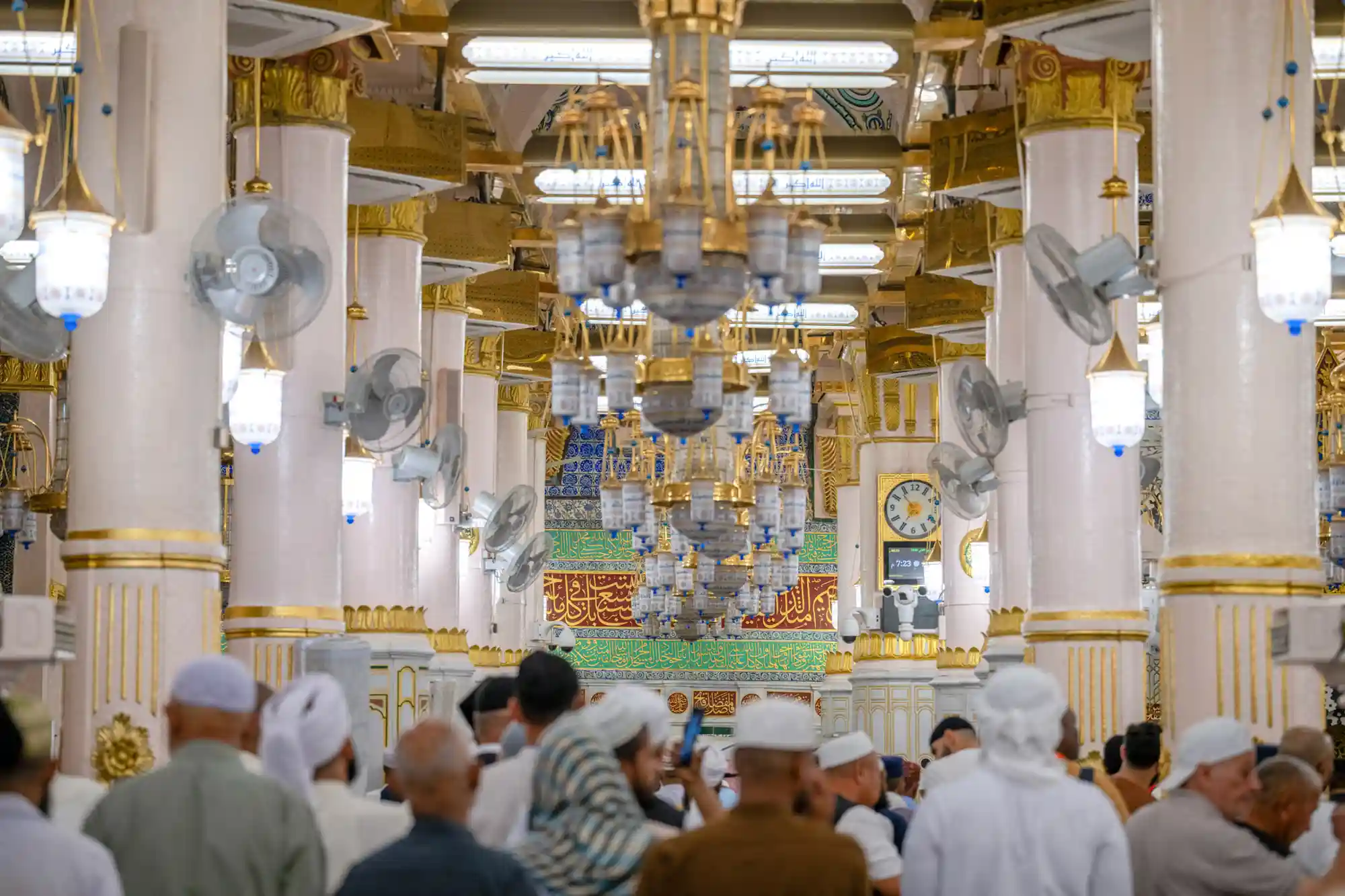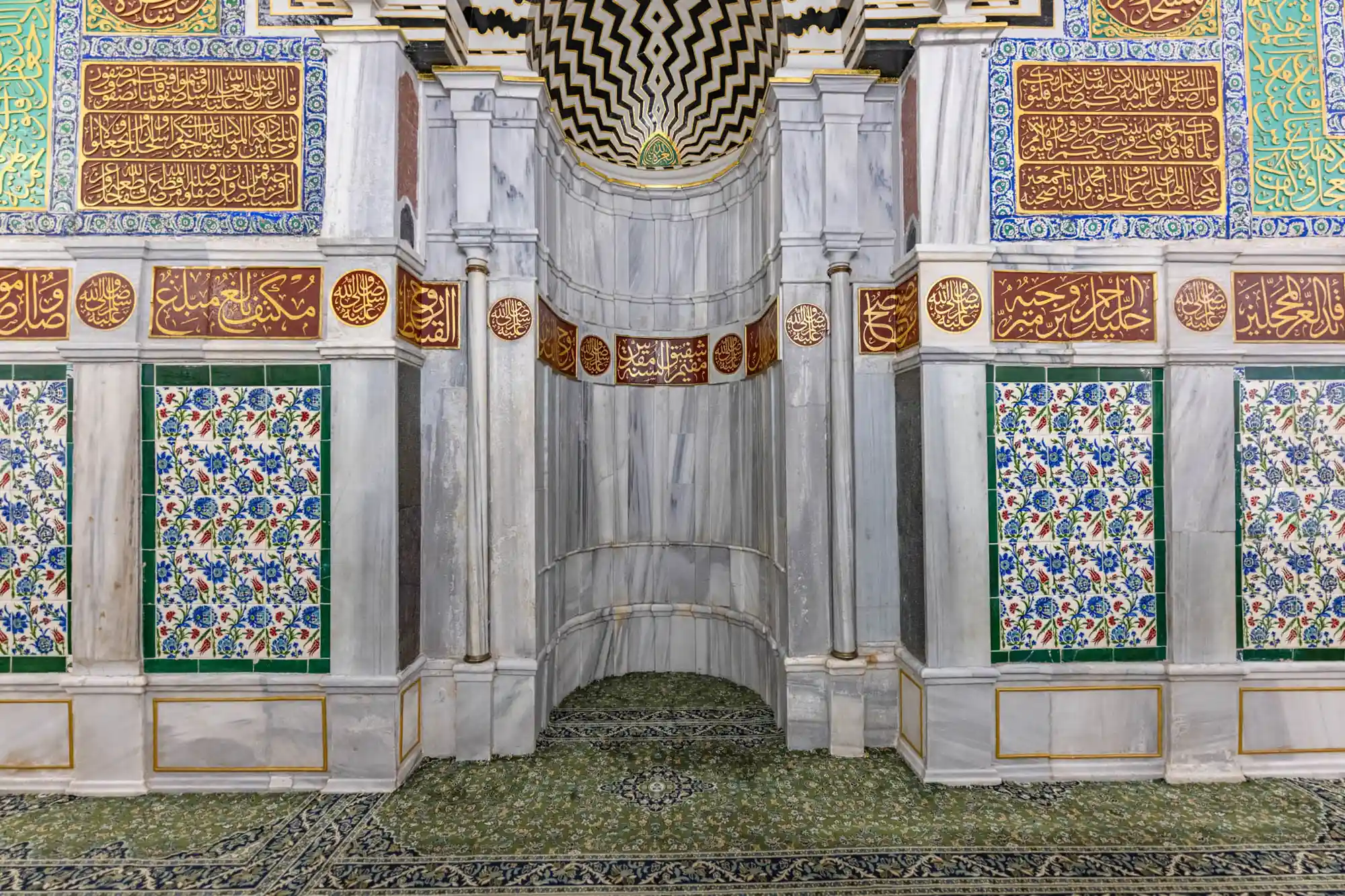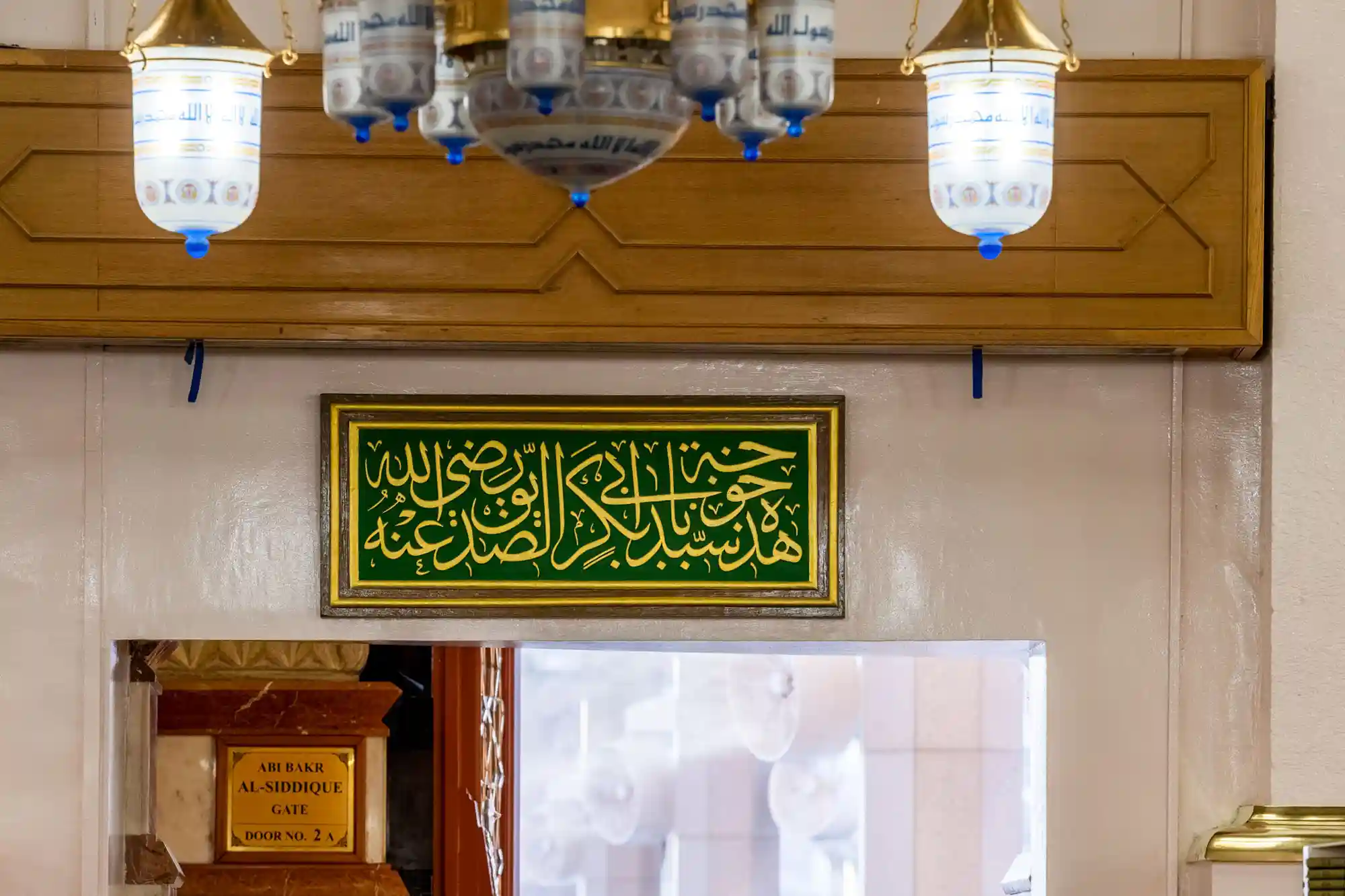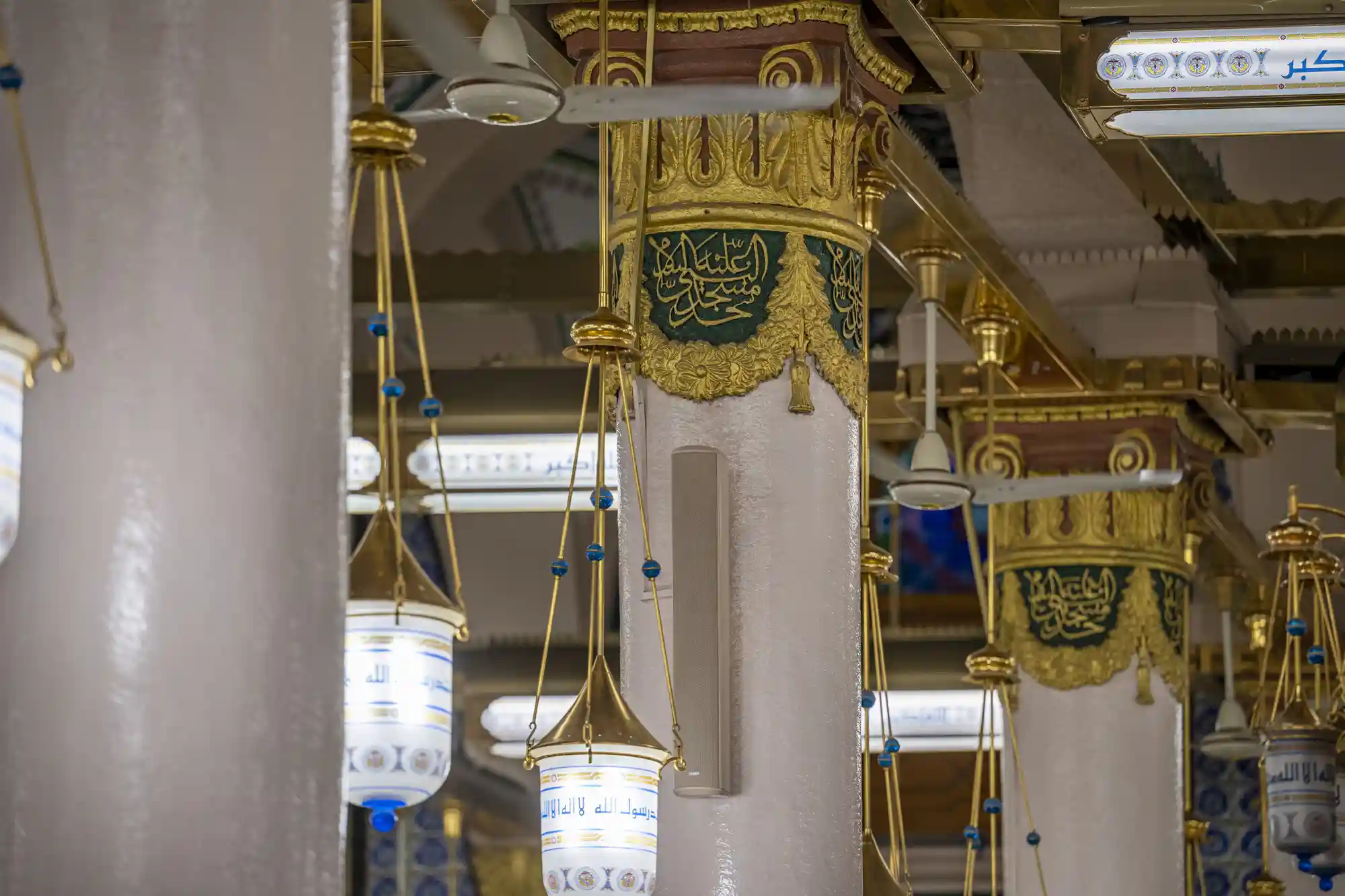The Story of Building the Old Mosque:
When the Messenger of Allah (ﷺ) arrived in Madinah as an emigrant from Makkah, he built the Prophet’s Mosque in the place where his she-camel kneeled down. This event took place in Rabi` al-Awwal in the first year of the Hijri calendar. The floor of the mosque was covered with sand, the roof consisted of palm fronds, and the columns were made of palm trunks. The walls were built with bricks.
This mosque was almost square in shape. It was approximately 35 meters long from north to south, and approximately 30 meters wide from east to west. It was about 2.5 meters high, and its area is estimated at 1,050 square meters. Later on, it witnessed expansion.
The Prophet (ﷺ) made three doors for his mosque. He also ordered the back of the mosque to be reserved as a hospice, a shaded place for the people of Al-Suffah- the poor, travelers and the homeless.
The Prophet's Expansion:
After the Messenger of Allah (ﷺ) returned from the Battle of Khaybar in the seventh year of the Hijri calendar (627 AD), the mosque became too small to accommodate the increasing number of Muslims. Therefore, the Messenger of Allah (ﷺ) ordered it to be expanded. It was expanded from the western and northern sides. Its total area reached approximately 2,500 square meters. Having said that, the mosque was not expanded from the qibla side.
The Most Important Parts of the Old Mosque Today:
• The Mosque.
• Aishah's room: this is the room where the Prophet (ﷺ) lived with Aishah (RA). In this room, the Prophet (ﷺ) and then his two companions, Abu Bakr and Omar (RA), were buried. The room was annexed to the Prophet's Mosque during the reign of Al-Waleed bin Abdulmalik.
• The Blessed Rawdah (the sacred chamber): Located at the front of the Prophet's Mosque, it extends from the Prophet's home to his pulpit. The Prophet (ﷺ) said: "Between my house and my pulpit is a Garden of Paradise."
• The Prophet's Mihrab (Niche): It is the place where the Prophet (ﷺ) used to stand and pray. The mihrab standing today was built in 888 AH. It was restored in 1404 AH during the reign of King Fahd.
• The Prophet's Pulpit: Located to the west of the Mihrab, it has been replaced many times. The current pulpit dates back to 998 AH, and consists of 12 steps.
• The Cylinders: These are the columns supporting the ceiling of the Rawdah. During the Prophet’s lifetime, they were made of palm tree trunks. Each column is linked to certain historical and Islamic events.
• Al-Suffah: it is a place behind the Rawdah. The Prophet left it covered after the qibla direction was changed. It was a shelter for poor emigrants.
How Do I Know the Borders of the Old Mosque?
The area of the Old Mosque is marked by signs on the columns: golden patterns and lines. The southern boundary of the Old Mosque is marked with the copper barrier which is still standing today. The height of the ceiling of the original first structure is marked by golden ring marks over the columns with flowers. The height of the structure of the expansion that was carried out after the Battle of Khaybar is marked by palm frond engravings.
